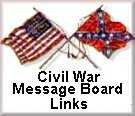In 1963, National Geographic produced a commemorative issue featuring articles about the Centennial of the Battles of Gettysburg and Vicksburg, including a forward written by Carl Sandberg. Living on a farm in the far northern state of New Hampshire at the time, and all of eight years old, I would carry that magazine with me everywhere I went, marveling over the full-color maps showing the troop movements during each day of the battle which took place on the hills and valleys surrounding the small town in Pennsylvania. During a family trip south the following year, I was thrilled when my parents stopped for two days in Gettysburg. Still carrying that now rather worn and tattered magazine, and wearing a plastic cavalry belt from which hung a plastic saber, I spent hours exploring the rocks at Devil’s Den, peering down from the edge of Little Round Top, and trying to read the inscriptions on every monument on the field.
Over the years that followed, I would take every chance available to me to visit Gettysburg, now coming from the south after moving with my family to Florida when I was eleven. I even contemplated moving there after traveling to Pennsylvania late one fall to take the Licensed Battlefield Guide test. (I did pass, but just barely, receiving a score of 70.)
In 1988, I was privileged to take part in the 125th anniversary reenactment of Gettysburg along with several units making up what was known as the “Florida Brigade.” A group photograph of the Florida troops, taken by period photographer Fritz Kirsch, shows a stern-looking group of soldiers, some of whom had come from as far away as Germany to participate with us. During “Pickett’s Charge,” several of us formed what we called the “cannon fodder” group – at the right moment during the advance, we all flung ourselves in different directions following the report of a Union fieldpiece. (We must have done it fairly realistically – several nearby spectators actually thought we were hurt.)
In 1991, one year after our marriage, my wife Cathy and I visited Gettysburg during a vacation trip, spending the night at the Farnsworth House Bed and Breakfast. Six years later, now living in North Carolina (coincidentally living just a few miles from Carl Sandberg’s home), I was invited by a friend still living in Florida to join with his artillery unit to participate in the 135th anniversary reenactment. The old thrills still enveloped me as I took part in the artillery bombardment of the third day, and watched in awe as the Confederate ranks passed our guns as they swept up the rise toward the Federal position. This would prove to be my final reenactment, as the years and medical issues combined to preclude me from joining the ranks again.
Two weeks ago, during another family vacation, this time myself, my wife and our two daughters, I once again visited the battlefield. I found the changes made by the National Park Service to be amazing. Gone is the old visitor’s center, where I watched the Electric Map of the battle. Gone is the old gray round Cyclorama building from Cemetery Ridge. Also gone was the horrendous tourist tower that once intruded on every view from all corners of the field. Mixed emotions filled me as we toured the new visitor’s center – I was extremely impressed with the restored Cyclorama painting and the museum, while finding the film very interesting. I was somewhat dismayed to find the gift shop overflowing with tourist “junk” (get your gigantic 150th Anniversary Chocolate Bar!), though I spent quite a bit of time browsing through the book section.
Leaving the visitor’s center, we followed roads leading us to Cemetery Ridge, parking near the famous Copse of Trees that was the focal point for Longstreet’s Assault on July 3. As I stood there, looking out across toward the Emmitsburg Road, I turned to watch my twin daughters, now 21 years old, reading the inscription from the marker placed at the point where General Lewis A. Armistead was mortally wounded. I could not help but think of that eight-year old boy who, fifty years earlier, had begun a lifelong fascination of the American Civil War, and how that battle had influenced his own life.
P.S. I don't have that tattered old National Geographic any more, but I did manage to find another copy of that issue, which I treasure today.
.jpg)










